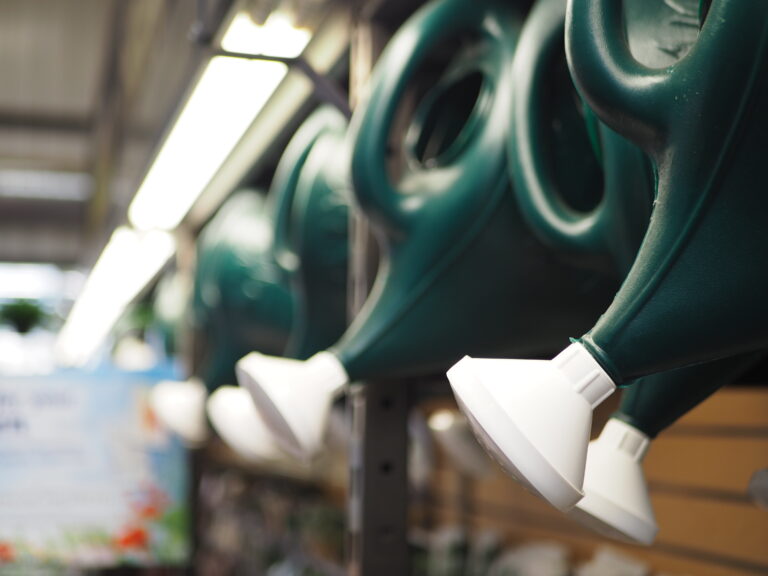Watering Details for New Landscape Plantings

Let the actual temperature be your guide. Average temperatures are just that, averages. If you will be gone for a week or more, have a plan for watering your new plantings while you are away.
In times of moderate drought, consider what you can do in your own landscape to conserve water. Here’s a link to a Fact Sheet published by the University of Massachusetts Agricultural Extension. Water Conservation Checklist
Your watering habits make all the difference.
Plants need a consistent supply of water to maintain health and vigor.
Newly planted perennials, shrubs, and trees need deep watering weekly to give them a healthy start. ‘Deep’ is defined as an equal volume of water as the original pot or root ball. Water slowly to ensure that the water percolates deep down to the base of the root ball and doesn’t run off the soil surface.
Containers need a deep dose of water daily (unless rains have been flooding the containers).
Established drought-tolerant perennials can get by with less hand-watering but a weekly dose will keep them looking good.
Focus watering energies on your fruiting trees, shrubs, and valuable specimen plants if days are sunny and dry for a week or more. Keep watering through the month of October or until a hard freeze prompts all the leaves to fall.
Watering practices are critical to the successful establishment of landscape plants and more so during drought. The following checklist will make plant care easier. Printable format of this post.
Frequency
While potted plants and window boxes in sunny locations need daily watering, most other plants do not. Heavy watering every second or third day is better than frequent light waterings. A light watering daily will evaporate quickly and will not soak into the soil to the root zone. Keep up weekly waterings throughout the first and second growing seasons for new plantings.
Time of day
Sunlight does not burn the foliage of freshly watered plants. Watering should be done during daylight hours. Water left on leaves after sundown increases the potential of fungal spores developing on leaf surfaces.
Conserving water
Use soaker hoses, drip irrigation systems, timers, or tree gator bags to reduce water use. Mulches 1-2” deep will reduce evaporation and cool soil temperature. Water-absorbing polymers “grab” excess water and slowly release it back to the soil as the plant requires it. Implementing these practices will keep plants healthy and reduce your water bill.
Watering FAQ’S- Frequently Asked Questions
What if I can’t plant right away?
If you can’t plant, then you must water plant containers or burlapped balls DAILY.
How much water is adequate?
As a general rule, large trees should get 10-20 gallons of water 1-2 times a week. Smaller shrubs should receive 5-10 gallons of water 1-2 times a week. An open-ended hose running at the plant’s base for 12 minutes in a slow, steady stream is about 5 gallons. Running for 25 minutes would be about 10 gallons.
When should I use my sprinkler?
Sprinklers are for shallow-rooted plants, such as grass, ground covers, newly planted annuals, etc. but not trees and shrubs.
How will I know when to water more often?
If there is a drought, then water deeply 2 times a week. If conditions are windy, water 2 times a week.
Do I need to water even if it rains?
If you received a sprinkling of rain today, that does not count as watering. If it has poured outside for five minutes, this does not count as watering. (This rain is generally too fast to soak in and usually runs off.) A FULL day of steady rain is equal to 1 watering. Rainfall alone rarely provides adequate consistent moisture for new plantings.
Is it okay to stop watering in spring or fall?
If conditions are dry, watering may have to start as early as April or continue into October.
Our Summer Garden Advice
By mid-summer, perennial gardens can start to look overgrown, annual flowers begin to fade, and bugs may be munching on your vegetables.
Summer Articles